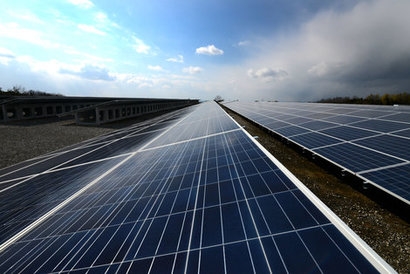
Cabinet Secretary for Net Zero, Energy and Transport Michael Matheson MSP launched the paper in the Scottish Parliament on Tuesday afternoon. The paper seeks views on what the nation’s ambition should be. This is in line with setting new objectives for wind power and marine renewables.
In the Scottish Parliament, Stephanie Callaghan MSP asked why further consultation was merited. Matheson replied that the Scottish Government wanted to discussions with the sector, “to understand what the most appropriate target would be”.
The strategy says that, “We recognise solar has an important role to play in decarbonising our energy system, particularly when combined with other renewables. We see a strong role for solar thermal, as well as domestic and commercial solar PV combined with battery storage systems - which have the potential to help reduce consumer bills.”
It adds that that a “final solar vision” will emerge later this year. Meanwhile, “We will support the sector to minimise barriers to deployment wherever possible and continue to provide support through our renewable support schemes.”
“While the Scottish Government has not immediately accepted the solar industry’s call to reach 4-6 gigawatts by 2030, as called for by MSPs across the political spectrum last year, the sector considers the firm commitment towards setting a target as a major step forward, and we warmly welcome the strategy” said Thomas McMillan, who chairs trade body Solar Energy Scotland. “Strong, stretching but ultimately deliverable targets: that is the last piece of the jigsaw to support more rapid deployment of solar power. Harnessing more of the sun’s rays – one of the cheapest and greenest sources of energy known to humanity – is exactly what Scotland needs to help combat the energy price crisis. The rapid growth of the onshore and offshore wind industries have in part been driven by having official targets, which provide support for the sector and confidence to invest in the supply chain. The solar industry expects that having its own target should have a similarly positive impact. It currently accounts for only a fraction of Scotland’s 13.6GW of renewable generation capacity, which is dominated by wind. Where Scotland stands now is in profound contrast to comparable nations. Denmark has around 2.3 GW of solar generation capacity and expects to add another 1.3 GW by the end of the year – making it the eighth largest market for solar power in Europe. This stands to prove that a Scottish Government target of up to 6 GW by 2030 is well within achievable bounds”
The vision would stand alongside Westminster’s plan for the UK to reach a total of 70 gigawatts by 2035, established in April’s British Energy Security Strategy. UK capacity stands at an estimated 15.5 GW.
Solar Energy Scotland anticipates that 6 GW could be reached through a combination of 3.5 GW of ground-mounted utility-scale installations, 1 GW on commercial-scale rooftops and 1.5 GW mounted on homes.
The acceptance of a need to set a target is the culmination of rising attention given to solar energy in Holyrood lately.
Just before the Scottish Parliament rose for its Christmas break, First Minister Nicola Sturgeon said that solar power can, “without a without a shadow of a doubt, make a very significant contribution to both the decarbonisation of our energy supply and the just transition that we need to make to a net zero emissions society by 2045.”
In November, Minister for Just Transition, Employment and Fair Work, Richard Lochhead MSP said that solar energy “has an important role in continuing to decarbonise our heat and electricity supply” and promised to “actively enable” its growth.
Shortly beforehand, a cross-party group of MSPs called for a target of 4-6 GW of solar generation by 2030. Among them was former energy minister Fergus Ewing MSP.
Only a month ago, non-domestic rates relief for solar systems was included in the Scottish Government’s budget. A consultation on lifting the need to obtain planning permission for larger solar installations on non-domestic buildings is expected early this year.
For additional information:

